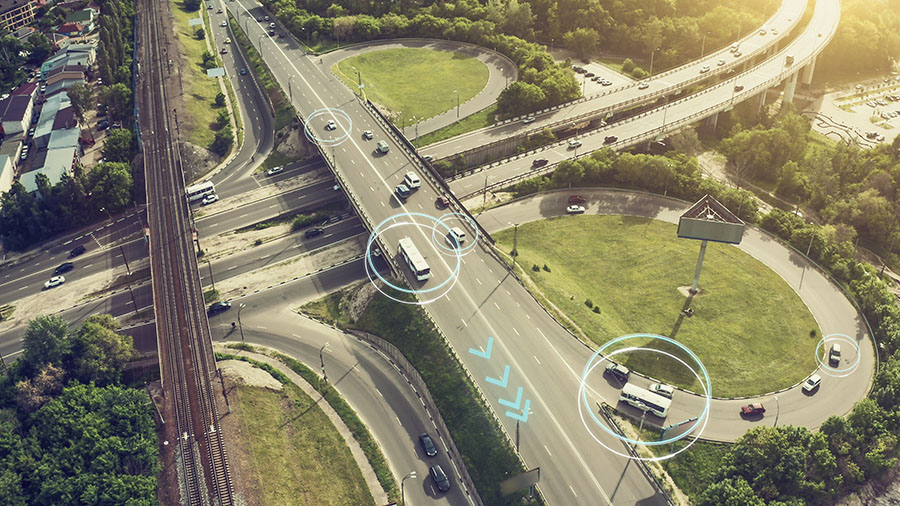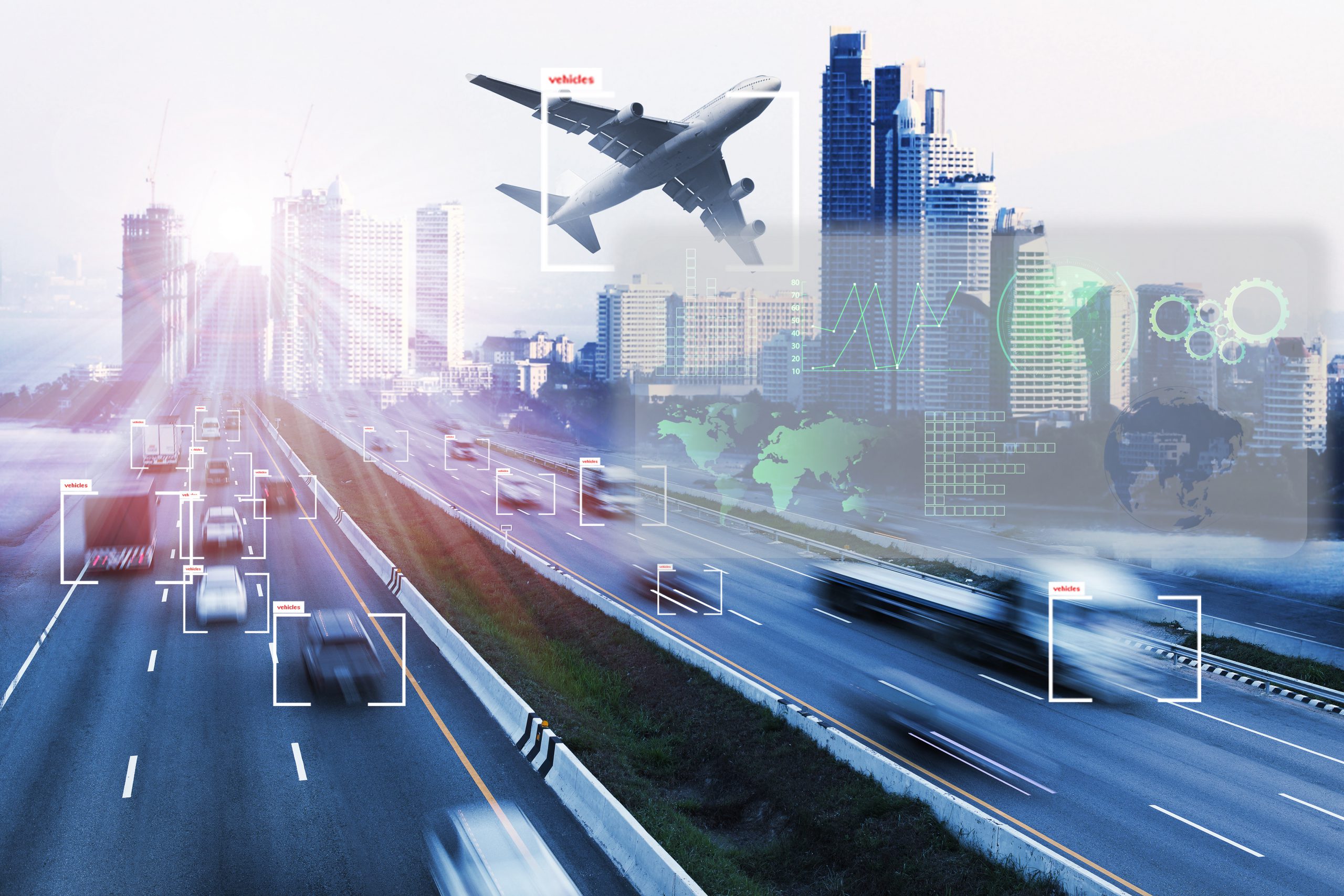UK Transport Vision 2050: thoughts on connectivity
Connectivity in the Transport Vision 2050
In the revised version of the Innovate UK Transport Vision 2050 we consider what transport could look like in the year 2050. We are being optimistic about technology development and implementation whilst assuming that the mega-trends we see and expect, actually play out. It isn’t a prediction – any prediction is bound to be wrong in some way or other – but it represents what we think might happen if all goes to plan.
I say “we” because I was fortunate enough to be one of the contributors to both the Connectivity and Autonomy sections.
I would like to expand on some of my thoughts behind the Connectivity section to explain some of the concepts.
Concepts around connectivity
In this context, “connectivity” refers to telecommunications, rather than how one transport mode or service connects with another.
Transport connectivity falls into 2 distinct areas:
- User connectivity: which provides data or information services to the user. These may be internet services to a traveller, or tracking data from a container to a shipping organisation, etc.
- Traffic management: which provides information or instruction to the operator / driver / pilot in order that the vehicle or craft progresses safely and efficiently to its destination.
Today, traffic management connectivity is usually only mandatory for aircraft and trains. For example, air traffic control may require a pilot to make a particular maneuver to avoid another aircraft. However, traffic management connectivity for some modes may be advisory, e.g. a road closure warning or weather information provided to a deep-sea trawler.
In most modes, (except aviation and rail), such information is currently advisory. But as we try and pack ever more traffic onto our roads, barges along our waterways, ships across seaways, and drones into our skies, more direct instruction will become important for effective flow. It will become more safety critical, requiring greater system integrity and reliability. Just a few weeks ago, we heard of one airliner lose its radio communications when approaching the UK. The result was a pair of Typhoon jets being scrambled to escort the plane to a safe landing. As more connectivity is used for more safety related traffic control, in whatever travel mode, the implications of failures inevitably become expensive and problematic.
One issue we have is that most of the terrestrial communications systems were never intended for safety applications. They are not particularly robust against attack, nor do they prioritise safety critical traffic, except perhaps 999 calls. This isn’t going to be changed by the transport industry, but neither will the telecommunications industry make wholesale changes without a definite demand. It is the usual “chicken and egg” problem. Nobody will commit to use a technology that doesn’t exist yet, but providers will not commit to the investment unless there is demand. So, we are probably going to see continual minor iterations rather than a major step change in robustness and reliability. This will limit the level of reliance that the transport industry can put on telecommunications.
Advancing user connectivity
Transport user connectivity was, to all intents and purposes, almost non-existent, even just a few years ago. However, these days we expect to be able to read our e-mails on a train, watch the news streamed on a plane over the Pacific, or track our luggage location in real time Inevitably these services will grow but will require ever more reliable and capable systems to keep us happy.
The Transport 2050 Vision Connectivity section has a pathway section which breaks out developments of capabilities and services for both traffic control and user services for the main transport modes. Clearly different transport modes have differing communication infrastructure requirements.
Road vehicles tend to use terrestrial communications, either 3G, 4G or 5G. Different carriers use different channels, not all of which may be available at any one time. For this reason, some vehicle manufacturers use SIM cards issued in a different country from the target deployment country. This way, the vehicle mounted radio can “roam” across any available network without being tied to a specific one.
As 6G progresses, standards are currently in discussion, with some early prototype systems in existence. Trials for early deployments of 6G are planned for 2028, so we can expect rollout in the following years. There has to date been a regular cadence of introduction of new “G” levels, so we have made an assumption that 7G introduction will follow a similar profile, with a significant proportion of the road coverage by 2050. We do not know what it will be like, but it is likely to be some combination of greater accessible bandwidth, greater speed and hopefully, better reliability.
In 2021, the UK government announced that all public 2G and 3G networks would be switched off by 2033 at the latest, but were encouraging network operators to switch off sooner, to free up spectrum for 4G, 5G and 6G services. We understand that most of the UK network operators are intending to do so during 2024. Other nations may choose alternate strategies, but approaches are likely to be substantially similar. Vehicle manufacturers will inevitably want common solutions rather than country specific versions.
Traffic management
Traffic congestion is a growing problem. Road authorities and councils want to influence demand and usage of routes in real-time. “Digital twins” of live traffic flows will be needed for simulations to be run faster than real time. This will allow alternate routing solutions to be evaluated. These simulations will require data from the vehicles and from roadside infrastructure, then the advice or instruction needs to be sent to the drivers. All of which is connectivity heavy, but could avoid expensive smart signage on motorways and roads.
Will road vehicles communicate directly to each other?
The technology is there today, but it is another “chicken and egg” problem. Vehicles are extremely price sensitive, so no manufacturer wants to spend money on features that nobody wants. Who would pay extra for that first vehicle which can’t communicate with any other yet? When the technology becomes so cheap that it can be bundled for free by the chip providers and the tier 1 suppliers, we might get progress, but we aren’t there yet. But when vehicle to vehicle (V2V) comes, expect it to roll out quickly.
We are starting to see the rise of Low Earth Orbit satellite communications. Prices for vehicle systems and services are making these more accessible, with Starlink setting the pace. For high availability in rural areas, there is no real terrestrial option, and as competition in the satellite. communications space evolves, we should expect to see availability increase and costs fall.
Finally, a word on timing signals. Almost all modern telecommunications rely on a technology called “packet switching”, which itself relies heavily on ultra-accurate timing. Your mobile phone will probably be using timing from a GNSS satellite constellation, but in these days of unstable world politics and system hackers, we cannot rely on a foreign system being available. So, the UK is developing a new, national terrestrial reference timing system, led by the National Physical Laboratory (NPL). These are the experts behind the original atomic clock, so they know a thing or two about ultra-accurate timing.
– Richard Morris, Innovation Lead for Automated and Connected Vehicles, Innovate UK
Feedback
If you would like to offer feedback to help us further shape and inform the UK Transport Vision 2050, please use our feedback form to submit your comments.
Reimagining transport: UK Transport Vision 2050
The UK Transport Vision 2050, first published in 2021, has been updated based on increased understanding, changing circumstances and feedback from over 200 partners.




